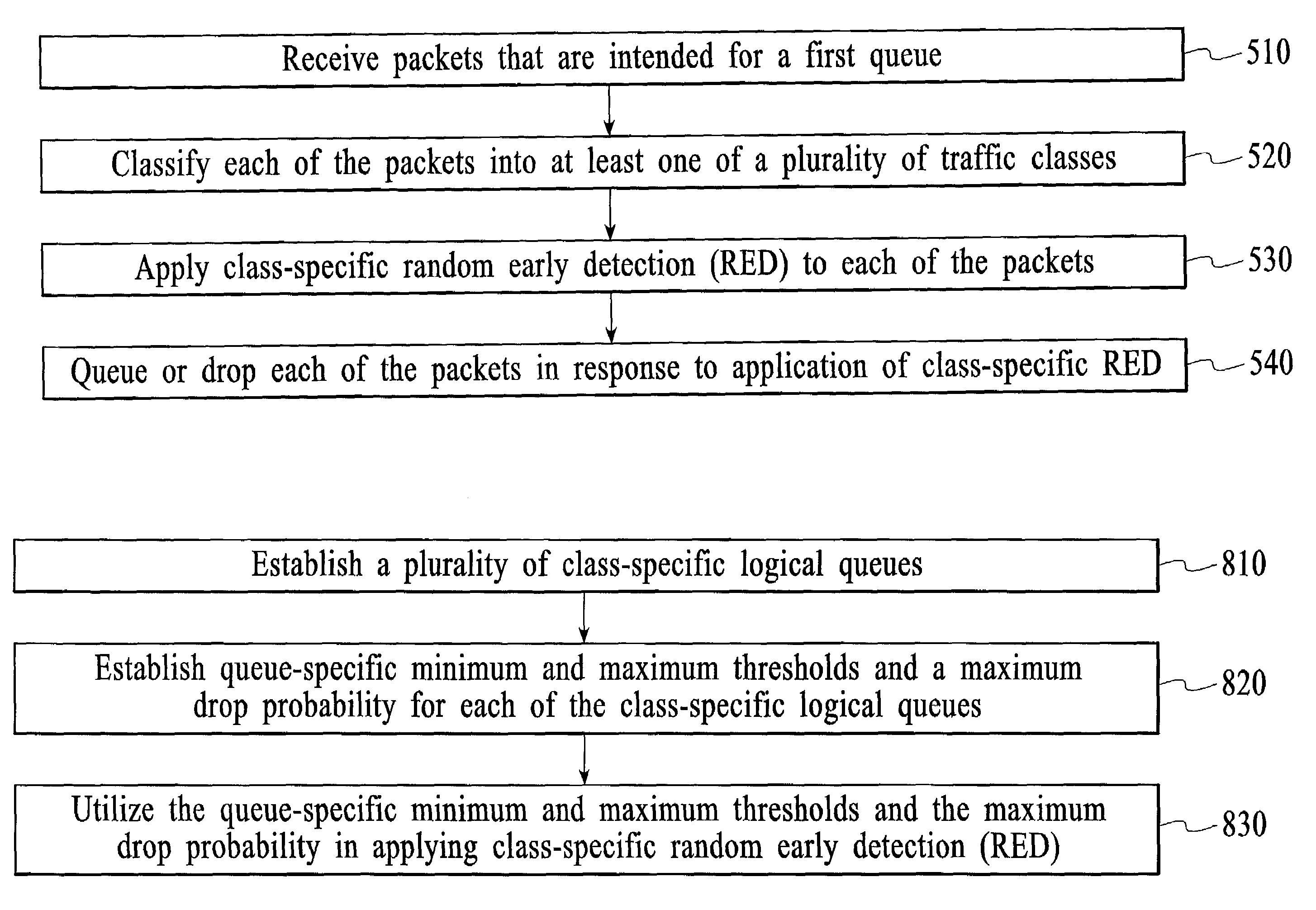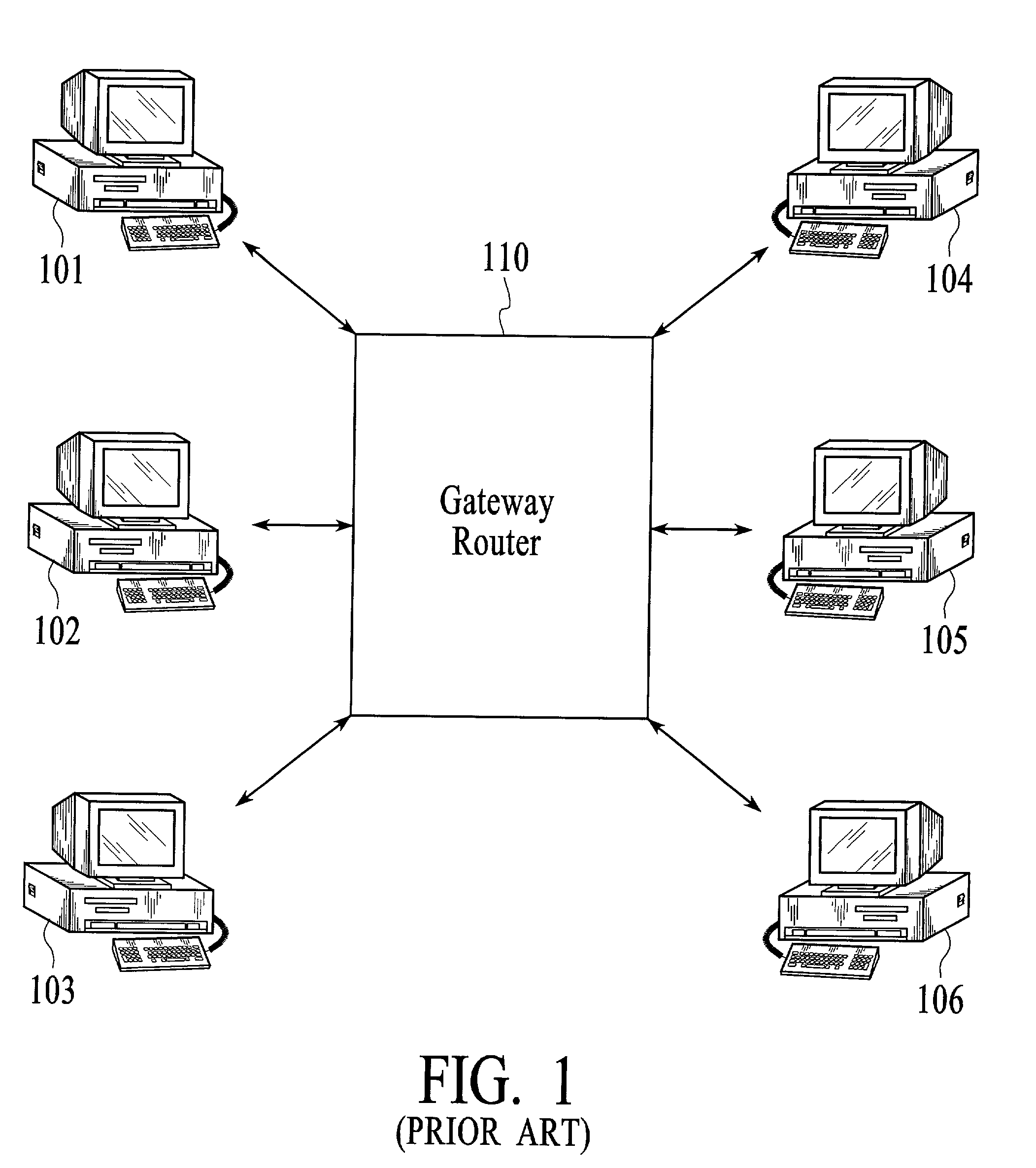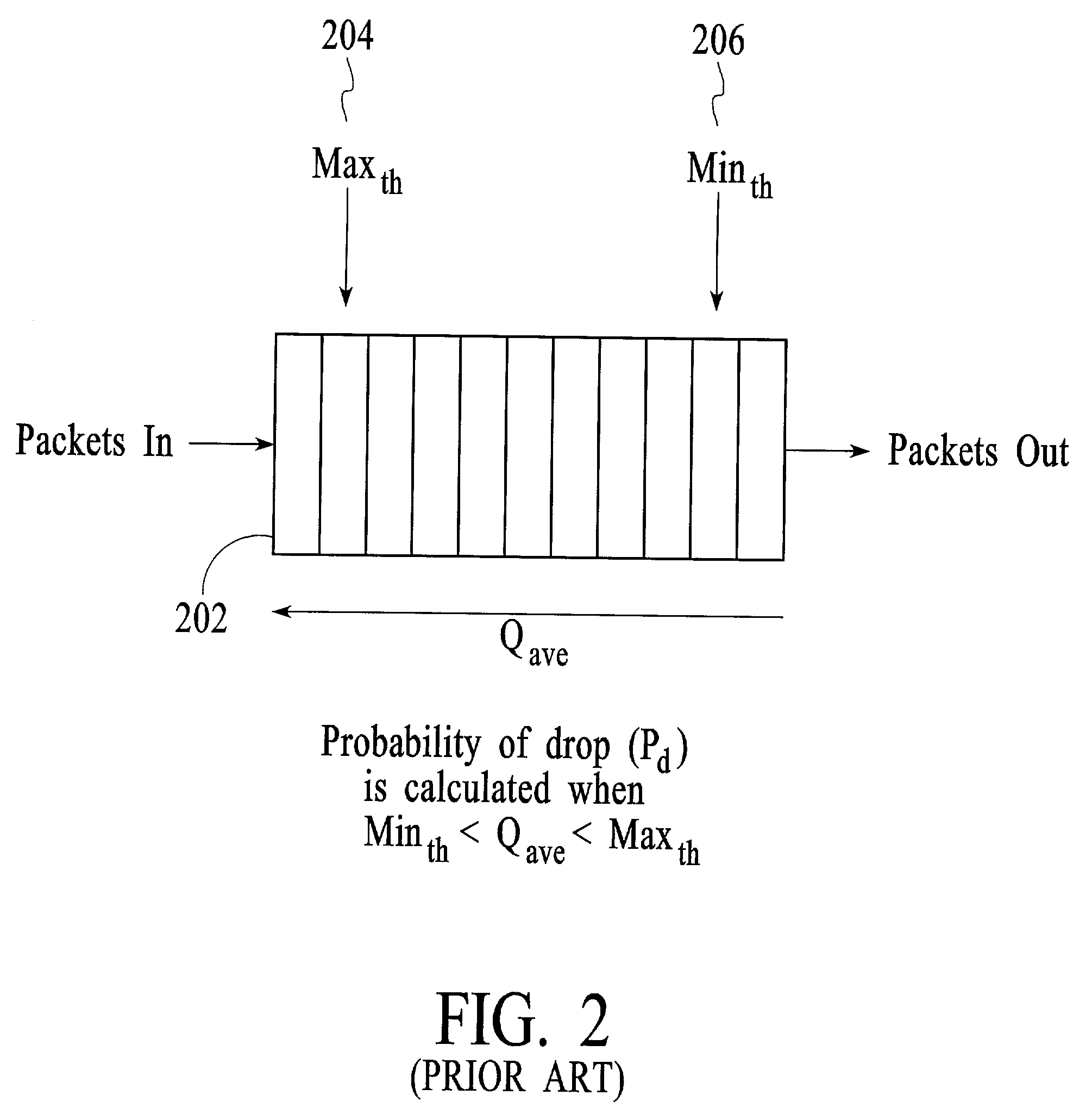Controlling the flow of packets within a network node utilizing random early detection
a network node and packet control technology, applied in the field of computer networks, can solve the problems of tcp sessions back-off in an unsynchronized manner, underutilization of the router, and congestion of the router queue, and achieve the effect of cost saving and easy adaptation
- Summary
- Abstract
- Description
- Claims
- Application Information
AI Technical Summary
Problems solved by technology
Method used
Image
Examples
first embodiment
[0042]FIG. 8 is a flowchart of a method for controlling the flow of traffic in a network node in accordance with the present invention. At block 810, a plurality of class-specific logical queues is established. In an embodiment, the class-specific logical queues are established and managed by the class-specific RED logic. At block 820, maximum and minimum thresholds and a maximum drop probability are established for each of said plurality of class-specific logical queues. At block 830, the maximum and minimum thresholds and the maximum drop probability for each of said plurality of class-specific logical queues are utilized in applying RED. Again, since the drop probability is a function of the the maximum and minimum thresholds and the maximum drop probability of a queue, the maximum and minimum thresholds and the maximum drop probability for each of the plurality of class-specific logical queues can be adjusted so that packets of a lower priority are dropped before packets of a hi...
second embodiment
[0048]FIG. 10 is a flowchart of the method in accordance with the present invention. First, class-specific drop probability weights are established for a plurality of different traffic classes, via step 1010. Next, a corresponding class-specific drop probability weight is identified for a received packet, via step 1020. Finally, the corresponding class-specific drop probability weight is utilized to calculate a class-specific drop probability for said one received packet, via step 1030. In the system implementation of FIG. 6, the steps 1010-1030 are carried out by the class-specific RED logic.
[0049]In an embodiment, the class-specific RED techniques are implemented in a router, however the class-specific RED techniques could be implemented in any device that queues traffic, such as a switch. In addition, although class-specific RED is implemented with respect to a single queue (i.e., a first queue), class-specific RED can be implemented as described above on multiple queues. That is...
PUM
 Login to View More
Login to View More Abstract
Description
Claims
Application Information
 Login to View More
Login to View More - R&D
- Intellectual Property
- Life Sciences
- Materials
- Tech Scout
- Unparalleled Data Quality
- Higher Quality Content
- 60% Fewer Hallucinations
Browse by: Latest US Patents, China's latest patents, Technical Efficacy Thesaurus, Application Domain, Technology Topic, Popular Technical Reports.
© 2025 PatSnap. All rights reserved.Legal|Privacy policy|Modern Slavery Act Transparency Statement|Sitemap|About US| Contact US: help@patsnap.com



